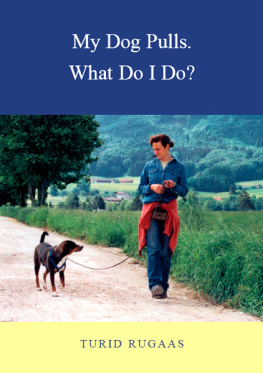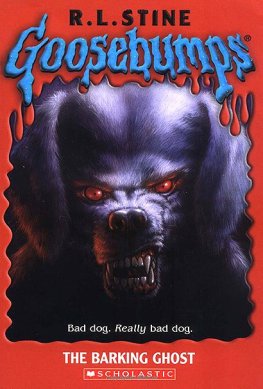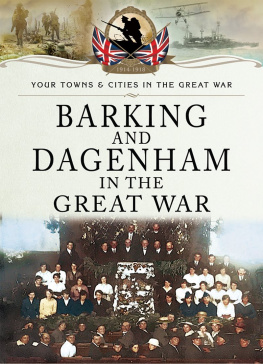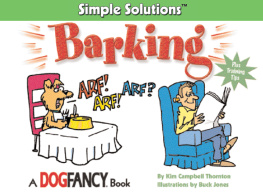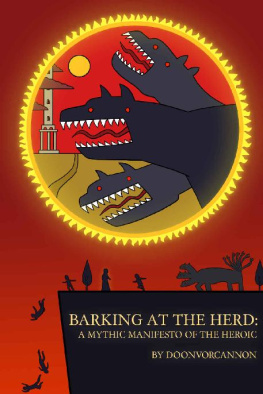Turid Rugaas - Barking, the Sound of a Language
Here you can read online Turid Rugaas - Barking, the Sound of a Language full text of the book (entire story) in english for free. Download pdf and epub, get meaning, cover and reviews about this ebook. genre: Detective and thriller. Description of the work, (preface) as well as reviews are available. Best literature library LitArk.com created for fans of good reading and offers a wide selection of genres:
Romance novel
Science fiction
Adventure
Detective
Science
History
Home and family
Prose
Art
Politics
Computer
Non-fiction
Religion
Business
Children
Humor
Choose a favorite category and find really read worthwhile books. Enjoy immersion in the world of imagination, feel the emotions of the characters or learn something new for yourself, make an fascinating discovery.
- Book:Barking, the Sound of a Language
- Author:
- Genre:
- Rating:3 / 5
- Favourites:Add to favourites
- Your mark:
- 60
- 1
- 2
- 3
- 4
- 5
Barking, the Sound of a Language: summary, description and annotation
We offer to read an annotation, description, summary or preface (depends on what the author of the book "Barking, the Sound of a Language" wrote himself). If you haven't found the necessary information about the book — write in the comments, we will try to find it.
Barking, the Sound of a Language — read online for free the complete book (whole text) full work
Below is the text of the book, divided by pages. System saving the place of the last page read, allows you to conveniently read the book "Barking, the Sound of a Language" online for free, without having to search again every time where you left off. Put a bookmark, and you can go to the page where you finished reading at any time.
Font size:
Interval:
Bookmark:


Barking
The Sound of a Language
Turid Rugaas
Dogwise Publishing
A Division of Direct Book Service, Inc.
701B Poplar Wenatchee, Washington 98801
1-509-663-9115, 1-800-776-2665
www.dogwisepublishing.com / info@dogwisepublishing.com
2008 Turid Rugaas
Graphic Design: Nathan Woodward & Lindsay Peternell
All rights reserved. No part of this book may be reproduced or transmitted in any form or by any means, electronic, digital or mechanical, including photocopying, recording or by any information storage or retrieval system without permission in writing from the publisher.
Limits of Liability and Disclaimer of Warranty:
The author and publisher shall not be liable in the event of incidental or consequential damages in connection with, or arising out of, the furnishing, performance, or use of the instructions and suggestions contained in this book.
Library of Congress Cataloging-in-Publication Data
Rugaas, Turid.
Barking : the sound of a language / by Turid Rugaas.
p. cm.
ISBN-13: 978-1-929242-51-1 (alk. paper)
1. Dogs--Barking. I. Title.
SF433.R84 2008
636.70887--dc22
2007051580
Printed in the U.S.A.
Contents
When the topic of barking comes up, people often first think that:
A dog is showing aggressive behaviorThe dog is dominantDogs do it to irritate usIt is bad behavior on the part of the dogIt is a cause of complaint from neighborsOn a superficial basis, these reactions make sense. Nothing is more irritating to people than barking. It makes many people very angry and gets on their nerves and neighbors often complain. People often respond to barking by becoming irritable, angry, nervous, and unsure about what the dog is doing.
Such reactions are based on a lack of knowledge about why dogs barkand people tend to over-react to what they do not understand. Typical responses include yelling and wanting to punish the dogall of which usually have the opposite effect from what was intended. Instead of quieting the dog, it often results in just more barking. If it does succeed in quieting the dog, there are usually negative side effects. The dog will likely become afraid of the owner (or neighbor), more afraid of being alone, or develop eating or health problems. A whole range of symptoms due to chronic stress may develop in the dog.
These types of reactions to barking are the result of not understanding what is really going on when a dog barks. Knowledge provides understanding, and understanding gives us a little more insight and patience. When we are not stressed ourselves, we become able to keep a cool head, and self-control lets us handle problems better. We become better observers and can find smarter and more efficient solutions to the problems we face. In other words, analyzing the situation and calmly finding the reasons for what is happening is the best way to find a lasting and good solution without scaring or mentally destroying the dog.
Barking as Communication
Barking and the use of body language are important means by which dogs communicate. Vocal sounds and body language are used by all sorts of animals and people to express a wide variety of needs and emotions. Communication is necessary to be able to live together in a relationship with minimal conflicts and to be able to understand each other well. The key to understanding how to interact with a barking dog is learning how to interpret what a dog is trying to communicate.
This concept applies to humans as well as to dogs. In books and articles about family therapy it is often stated that most of the problems families struggle with arise due to a lack of ability to communicateto talk with each other. They talk past each other, and accuse each other of not listening to what I say. You never listen to me is a common accusation, often yelled at the top of the voice, and the yelling becomes louder and louder the more people do not feel they are being listened to.
It is exactly the same with dogs. When we think a dog is not listening, we yell louder and more angrily. Dogs also get frustrated about not being heard. They start yelling also especially when no matter how much they bark, they fail to make us understand what they are trying to communicate.
It is important for us to teach ourselves to listen to what our dogs try to tell us. Ideally we can recognize their attempts to communicatethe calming signals, the small signs of stressso we can solve problems before there is a real conflict. We need to pick up on the communication as early as possible. Or, if conflict has occurred, and we already feel we have a problem, to start listening more intently to what the dog is actually telling us. It is only then we can find the right.

Most mammals use a variety of sounds
and body language to communicate.



So How Do Dogs Try To Communicate?
Dogs have many different ways of expressing themselves beyond barking. Most (but not all) dogs communicate in a similar manner and these expressions can usually be easily recognized by other dogs. Some forms of communication are easy for people to understand, but some unique expressions are harder for people to comprehend without taking the time to learn about them. Dogs communicate in many ways including:
Distance creating signals used to keep someone away or increase the distance from another individual. Examples are showing teeth, lunging forward, snapping, biting, growling, and barking.Calming signals used to express politeness, solve conflicts, or to show friendliness.Body language that express fear or defense. Examples are tail between the legs, crouching, backing up or taking flight, and of course the stress symptoms like peeing, scratching, and shaking.Signs of joy. Examples are a wagging tail, licking, jumping, wiggling the whole body, and showing a happy face.And then there are all the sounds that dogs make including:
BarkingWhiningGrowlingHowlingAll of these are a natural part of what we can call the language of dogs. They are intended to communicate something to the world around them, and to express the feelings the dog has at that moment. Gaining a better understanding of what a dog is trying to communicate and why he may be trying to communicate when he barks will be the focus of the remainder of this book.

Barking is a natural way for dogs to express themselvesit is a part of their language. Nobody would ever dream about training away or punishing away a cat that meows or a horse that whinnies. But many people believe that dogs should not be allowed to bark or growl.
First and foremost you must understand and accept that dogs actually have a language, and that a part of that language is to make sounds. It is as simple as that. But given that, it must be admitted that vocal expressions in dogs can have formidable dimensions, and can be a problem for their surroundings including the people nearby.
Next pageFont size:
Interval:
Bookmark:
Similar books «Barking, the Sound of a Language»
Look at similar books to Barking, the Sound of a Language. We have selected literature similar in name and meaning in the hope of providing readers with more options to find new, interesting, not yet read works.
Discussion, reviews of the book Barking, the Sound of a Language and just readers' own opinions. Leave your comments, write what you think about the work, its meaning or the main characters. Specify what exactly you liked and what you didn't like, and why you think so.



